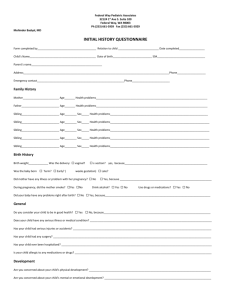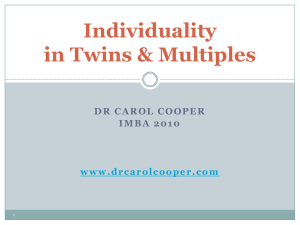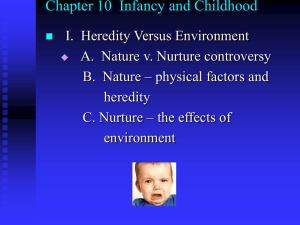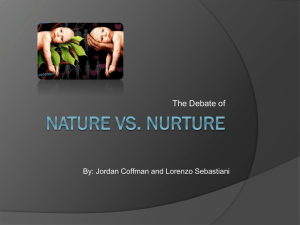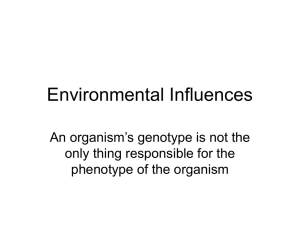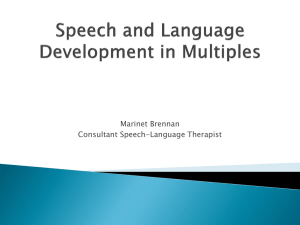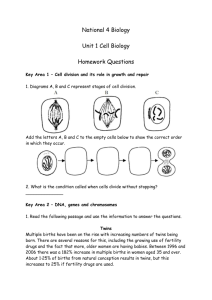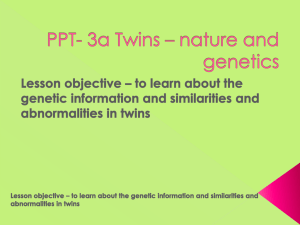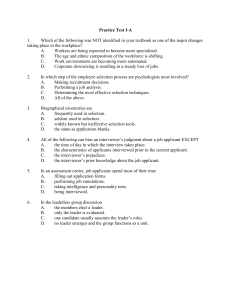AGESSiblingSpouseInteraction
advertisement
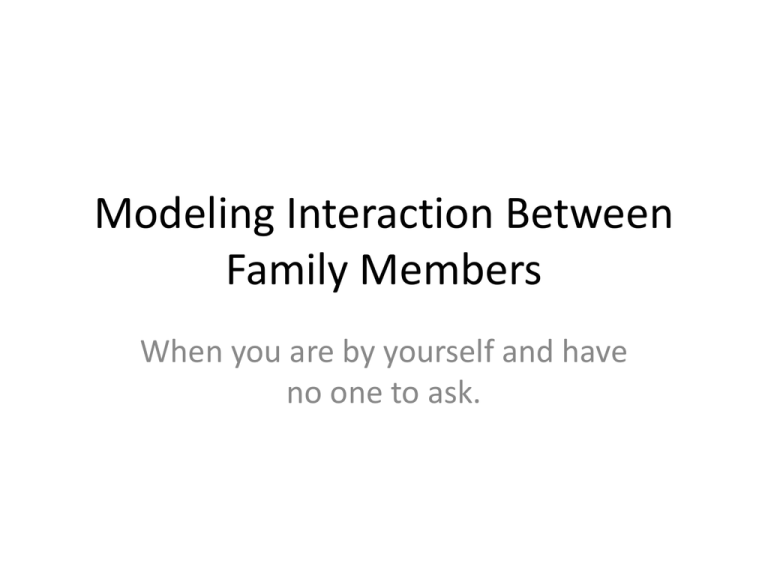
Modeling Interaction Between Family Members When you are by yourself and have no one to ask. Thank Tim York So Far: Have assumed people don’t affect each other May not be true Examples • • • • Do sibs (twins) affect each other? Peer effects? Spousal interaction? Mother-child interaction? THINK! • How do you think the world works? • How do you translate “how the world works” into: • design (choice of subjects) • measurement • model (diagram, algebra) • data (expectations for statistics) • analysis (code, decision) OpenMx can help you do the nuts and bolts. Two Examples • Twin and sibling Interaction • Assortative mating and spousal interaction Some early papers (caveat emptor!) • Eaves, LJ (1976) A model for sibling effects in man. Heredity 36:205-214. • Carey G (1986) Sibling imitation and contrast effects. Behavior Genetics 38:319-341 • Heath AC (1987) The analysis of marital interaction in crosssectional twin data. Acta Genetica Med. et Gemellol. 36:520. • Nance WE, Kramer AA, Corey LA, Winter PM, Eaves LJ (1983) A causal analysis of birthweight in the offspring of monozygotic twins. Am. J. hum. Genet. 35:1211-1223. • Lytton H, Martin NG, Eaves LJ (1977) Environmental and genetical causes of variation in ethological aspects of behavior in two year old boys. Social Biol. 24:200-211. Approach • • • • Start without interaction Figure out covariances between relatives “Include interaction” Use OpenMx to figure out what happens if…. Cooperation and competition in twins Structure BEFORE interaction S= A+C+E | gA+C gA+C | A+C+E b12 b21 What is structure after interaction? What is structure AFTER interaction? S*= (I-B)-1S(I-B)-1 Where B= ( 0 b12 b21 0 ) Note: Compare this with the LISREL model RUN AN EXAMPLE… BRAD!!!! • • • • • Now Try It Yourself! Work out expected covariances and correlations For different values of b (symmetric) Use positive and negative values of b For models with and without A Try to predict your answers Summarize the principal implications of social interaction for the data • Under what circumstances are you likely/unlikely to detect interactions? Now…Think about other worlds • What would you expect for singletons • What do you think would happen in larger sibships (3,4…siblings)? • How would you model the process? TRY IT!!!! Spousal Interaction: S What is B? S1 S1 T1 T2 S2 T1 T2 S2 What is B? S1 S1 0 T1 b T2 0 S2 0 T1 b 0 0 0 T2 0 0 0 b S2 0 0 b 0 What does this model assume? What does this model assume? • Both twins married • Mutual effect of husbands and wives symmetric • “Phenotypic” assortment for initial trait • Process has reached developmental equilibrium - implied by (I-B)-1 - limit of infinite series of interactions.

